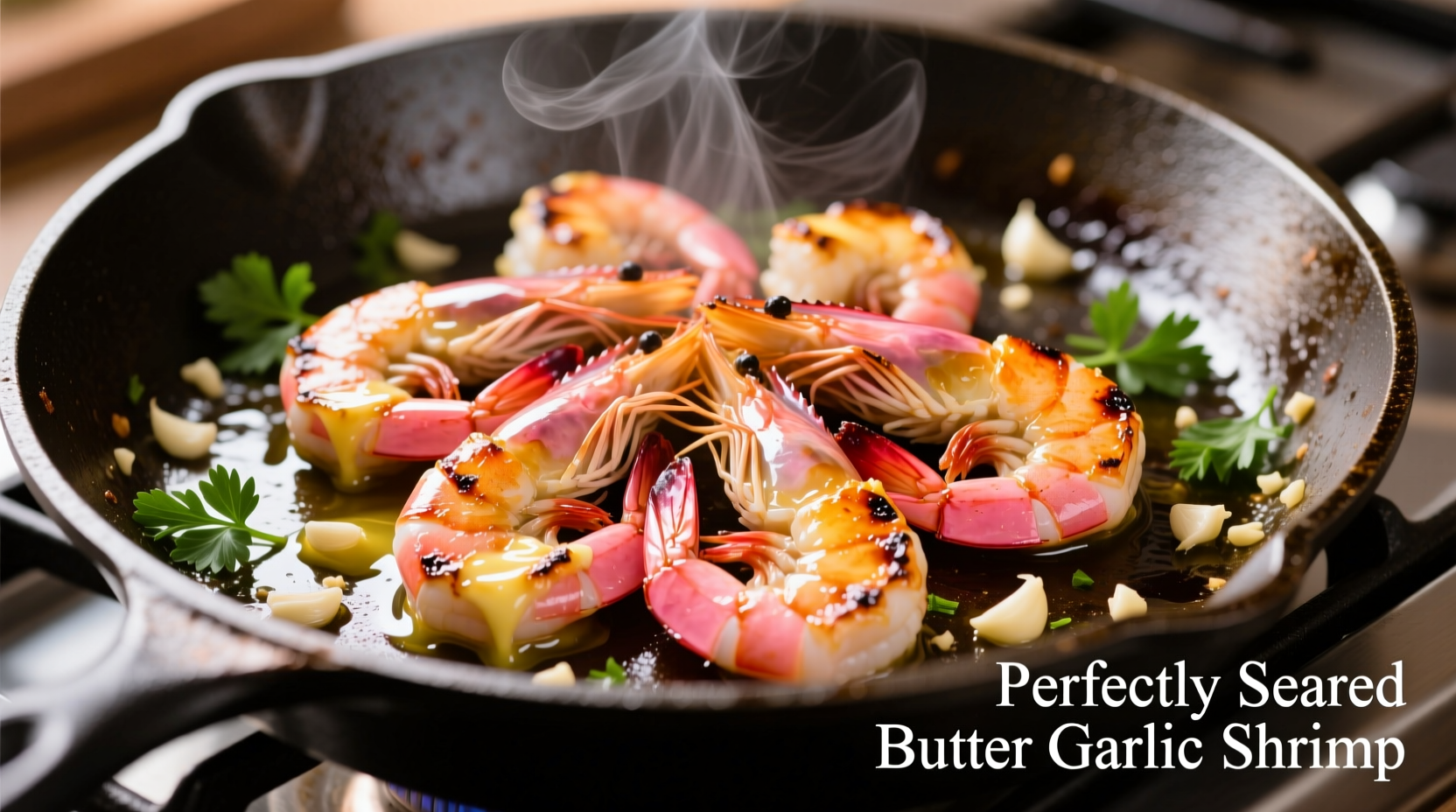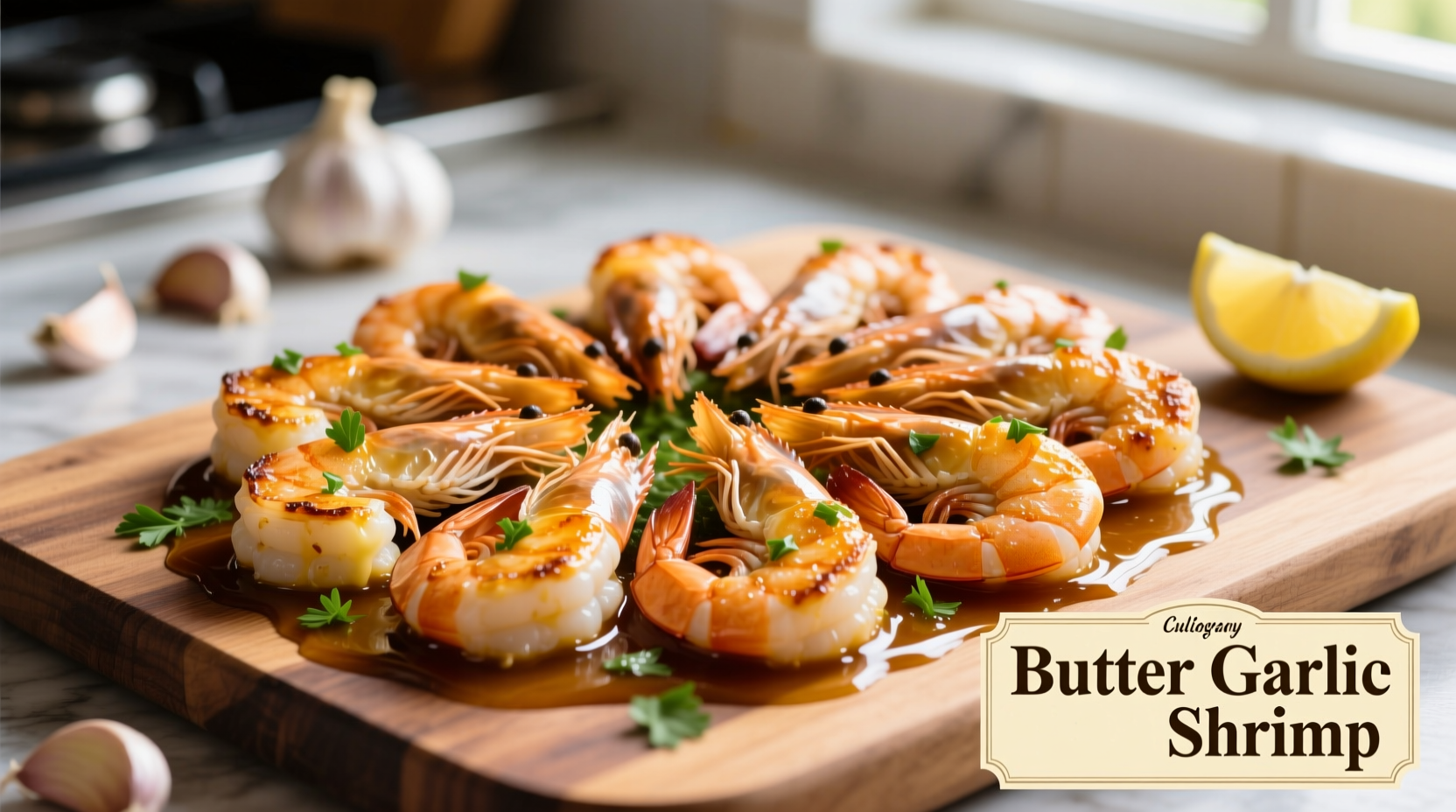Perfect butter garlic shrimp requires fresh shrimp, properly minced garlic, and a precise cooking sequence: pat shrimp dry, sear in hot oil for 1-2 minutes per side, then finish in a butter-garlic sauce for 2-3 minutes until internal temperature reaches 145°F. This 20-minute recipe delivers tender, flavorful shrimp without rubbery texture when following the temperature-controlled cooking method.
Nothing transforms a weeknight dinner faster than the aromatic sizzle of butter garlic shrimp hitting a hot pan. This classic preparation balances rich butter, pungent garlic, and sweet shrimp in a dish that feels luxurious yet comes together in under 20 minutes. But achieving that perfect balance—where the shrimp stays tender while the garlic infuses without burning—requires understanding the science behind the sizzle.
The Secret to Non-Rubbery Shrimp Every Time
Shrimp's delicate protein structure makes it prone to overcooking. According to the U.S. Food and Drug Administration, shrimp reaches safe eating temperature at 145°F internal temperature, which typically occurs after 2-3 minutes of cooking per side depending on size. Exceeding this temperature by even 5° causes proteins to contract excessively, squeezing out moisture and creating that dreaded rubbery texture.
| Shrimp Size | Count per Pound | Optimal Cooking Time | Visual Doneness Cue |
|---|---|---|---|
| Extra Large | 21-25 | 1.5-2 minutes per side | Opaque with C-shape curl |
| Large | 31-35 | 1-1.5 minutes per side | Uniform opacity, firm to touch |
| Medium | 41-50 | 45-60 seconds per side | Pearly white throughout |
Why Garlic Timing Makes or Breaks Your Sauce
Garlic's flavor compounds begin transforming at 158°F, developing that beloved nutty aroma. But beyond 185°F, those same compounds turn bitter. The solution? Add minced garlic to warm (not smoking) oil for 30-60 seconds until fragrant, then remove from heat before adding shrimp. This technique, validated by culinary research at the Culinary Institute of America, preserves garlic's sweet complexity while preventing acrid notes.

Step-by-Step Cooking Process
Prep Phase: Setting Up for Success
Dry shrimp thoroughly with paper towels—moisture creates steam instead of sear. Keep shrimp refrigerated until ready to cook. Mince garlic finely for even flavor distribution (larger pieces burn faster). Have all ingredients measured and within reach since the cooking process moves quickly.
Searing Stage: Building Flavor Foundation
Heat 1 tablespoon oil in stainless steel or cast iron skillet over medium-high heat until shimmering (about 350°F). Arrange shrimp in single layer without crowding. Sear 1-2 minutes until golden brown on first side, then flip and cook 1 minute more. Remove shrimp immediately to prevent carryover cooking.
Sauce Development: Creating Emulsion Magic
Reduce heat to medium. Add 2 tablespoons butter, swirling until melted. Add garlic and red pepper flakes, cooking 30 seconds until fragrant. Deglaze pan with 2 tablespoons lemon juice or white wine, scraping up browned bits. Return shrimp to pan with any accumulated juices, tossing to coat for 60-90 seconds until sauce emulsifies.
Avoiding Common Butter Garlic Shrimp Mistakes
Mistake: Cooking shrimp directly in butter
Solution: Butter's milk solids burn at 300°F—use neutral oil for searing, add butter later
Mistake: Overcrowding the pan
Solution: Cook in batches if necessary; crowded pans steam instead of sear
Mistake: Adding garlic too early
Solution: Introduce garlic after shrimp removal to control cooking time
Serving Suggestions That Elevate the Dish
Butter garlic shrimp shines when paired with absorbent starches that capture the flavorful sauce. Try these combinations:
- Linguine: Toss with 8 oz cooked pasta and 1/4 cup pasta water for restaurant-style entree
- Crusty bread: Serve with baguette slices for dipping (ideal for low-carb diets)
- Vegetable base: Spoon over roasted asparagus or zucchini noodles
Garnish with fresh parsley and lemon wedges just before serving. The acid brightens rich flavors while the herbs add freshness without overpowering.
Storage and Reheating Guidelines
Store leftovers in airtight container for up to 2 days. Reheat gently in skillet over low heat with 1 teaspoon water to create steam—never microwave, which makes shrimp rubbery. For meal prep, cook shrimp 70% done, then finish cooking when reheating to maintain texture.
Variations for Dietary Needs
Dairy-Free: Substitute butter with 2 tablespoons olive oil + 1 teaspoon nutritional yeast for umami depth
Spicy Version: Add 1/2 teaspoon smoked paprika with garlic for complex heat
Meal-Prep Friendly: Double sauce ingredients and serve over cauliflower rice











 浙公网安备
33010002000092号
浙公网安备
33010002000092号 浙B2-20120091-4
浙B2-20120091-4